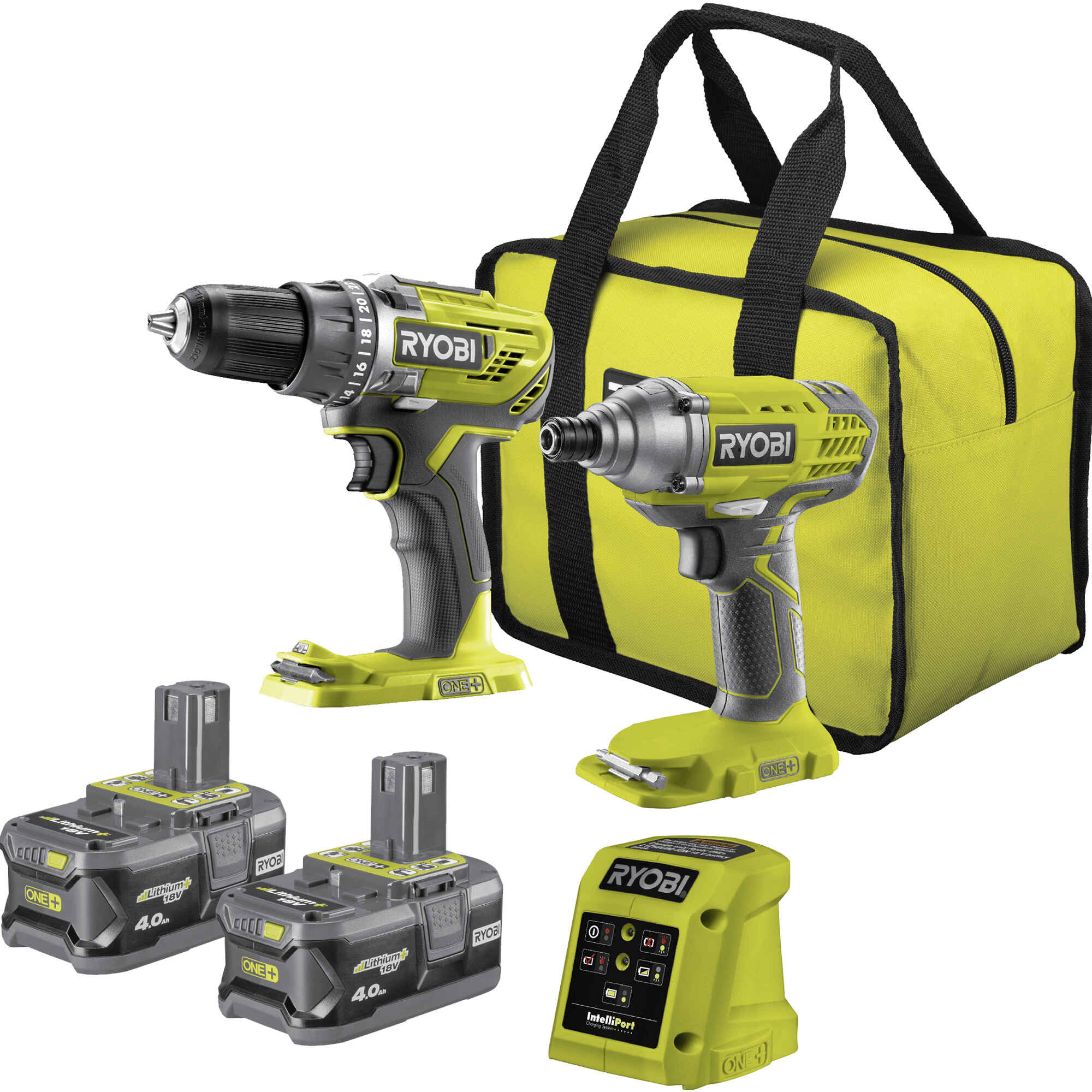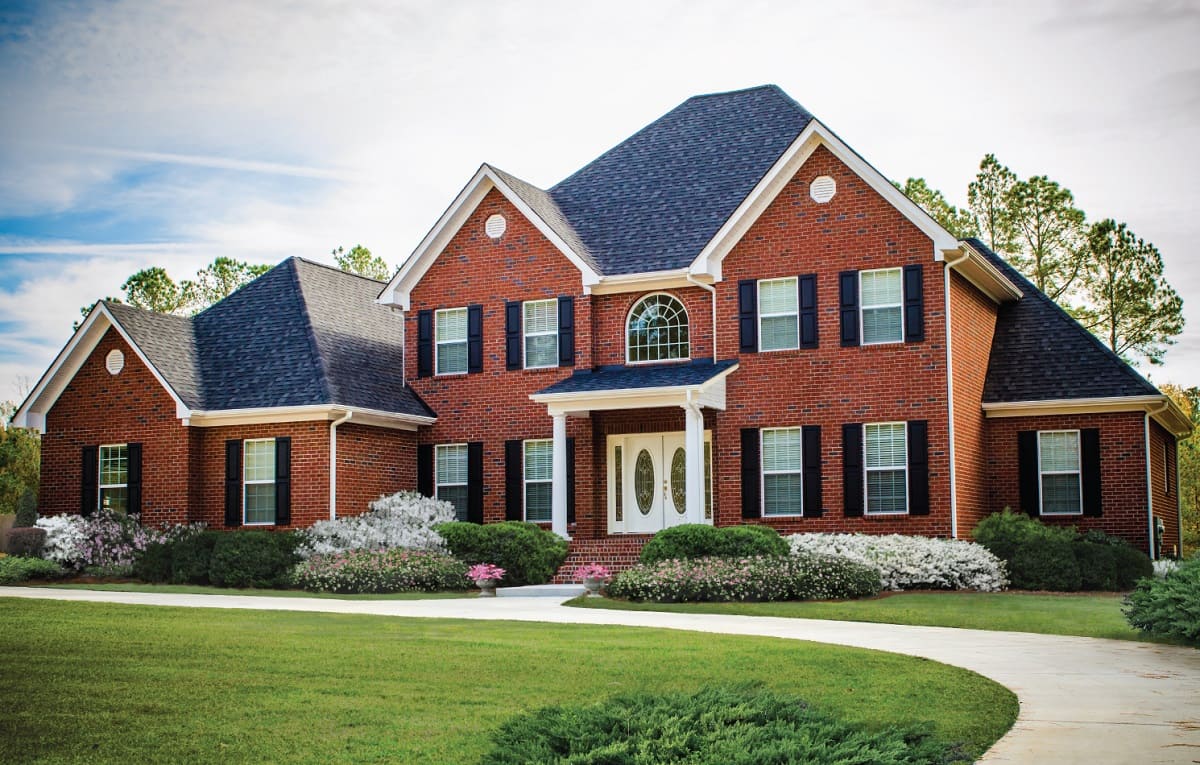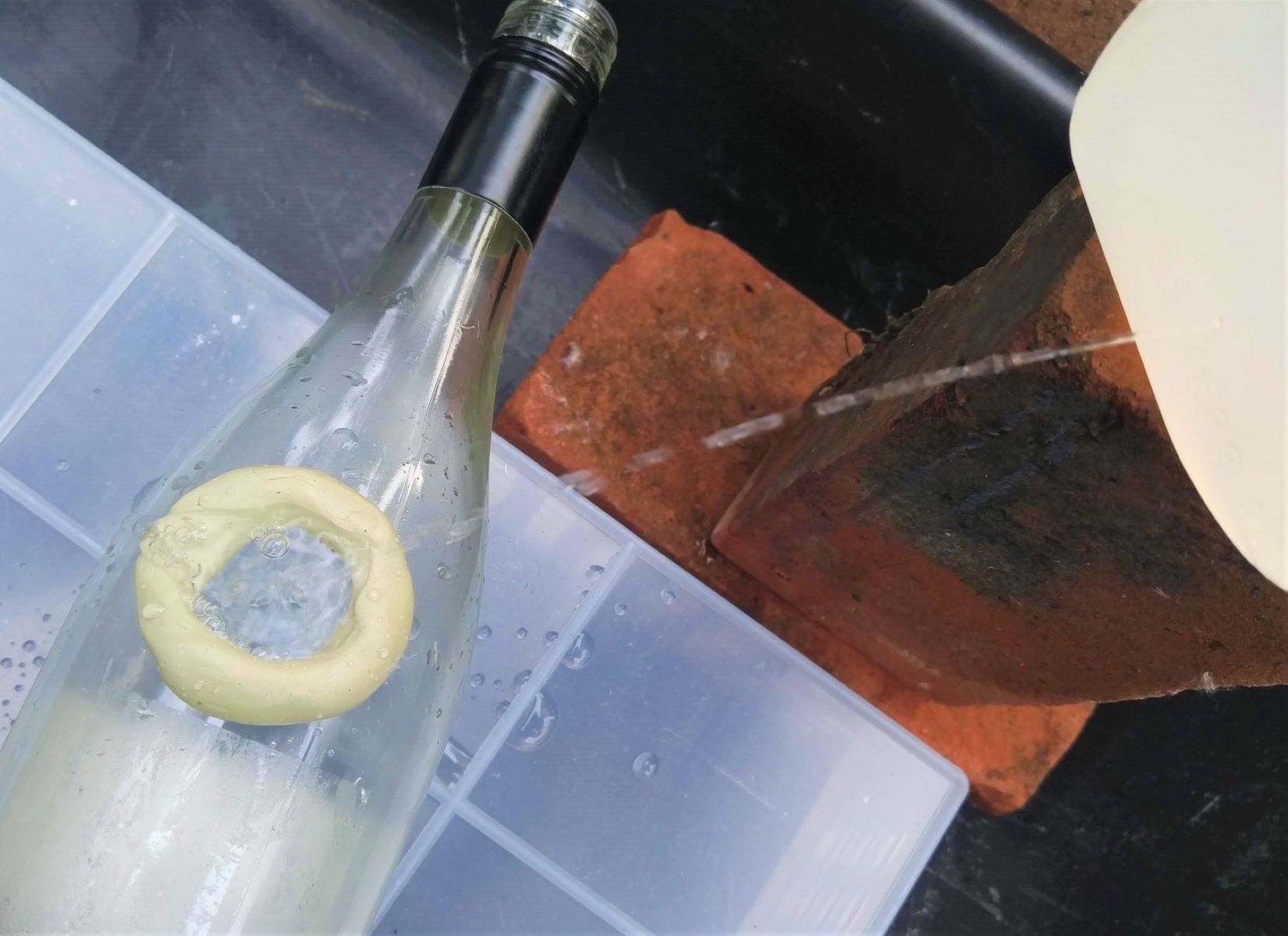Home>Construction & Tools>Building Materials>Why Can’t I Drill Into Brick


Building Materials
Why Can’t I Drill Into Brick
Modified: March 24, 2024
Learn why drilling into brick can be challenging and discover the best tools and techniques for working with this durable building material. Improve your DIY skills and avoid common mistakes.
(Many of the links in this article redirect to a specific reviewed product. Your purchase of these products through affiliate links helps to generate commission for Storables.com, at no extra cost. Learn more)
**
Introduction
**
When embarking on a home improvement project, the prospect of drilling into a brick wall can be daunting. Whether you're aiming to hang a picture, install a shelf, or mount a TV, the resilience of brick can pose a formidable challenge. However, with the right tools, techniques, and a comprehensive understanding of brick composition, this task can be accomplished with ease and precision. In this article, we'll delve into the intricacies of drilling into brick, exploring the composition of this robust building material, the various types of bricks, and the tools and techniques essential for a successful drilling endeavor. Additionally, we'll address common mistakes and provide effective solutions to ensure a seamless and efficient process. By the end of this article, you'll be equipped with the knowledge and confidence to tackle drilling into brick with finesse. So, let's roll up our sleeves and unravel the secrets of this age-old building material!
Key Takeaways:
- Drilling into brick requires understanding its composition, types, and using the right tools. Avoid common mistakes like excessive pressure and inadequate dust management for successful drilling.
- Different brick types, like common, face, and fire bricks, have unique drilling considerations. Proper technique, anchor installation, and moisture assessment are crucial for a seamless drilling process.
Read more: How To Drill Into Brick
Understanding Brick Composition
Bricks, the fundamental building blocks of construction, have been utilized for centuries due to their durability and resilience. Understanding the composition of bricks is essential when contemplating drilling into them. Typically, bricks are composed of clay, shale, and other natural materials, which are molded and fired at high temperatures to create the final product. The firing process results in bricks that are dense, hard, and resistant to weathering, making them an ideal choice for structural elements.
One crucial aspect of brick composition is their porosity. Bricks are inherently porous, meaning they contain tiny interconnected voids within their structure. This porosity affects the ease with which a brick can be drilled into, as well as its ability to retain moisture. The presence of moisture within the brick can impact the drilling process and the integrity of the structure, making it vital to consider this factor when planning any drilling activities.
Furthermore, the presence of additives such as lime or iron oxide during the brick manufacturing process can influence its hardness and density, thereby affecting the drilling process. These additives contribute to the unique color variations and textures found in bricks, adding to their aesthetic appeal.
By comprehending the composition of bricks, including their porous nature and the influence of additives, one can better prepare for the drilling process. With this foundational knowledge in mind, let’s explore the various types of bricks and their distinct characteristics.
Types of Bricks
Bricks come in a diverse range of types, each possessing unique properties that influence their suitability for drilling and their overall aesthetic appeal. Understanding the various types of bricks is crucial for selecting the most appropriate approach when planning to drill into them.
1. Common Bricks:
Common bricks, also known as building bricks, are the most widely used type in construction. They are typically composed of clay and shale, offering a balance of strength and affordability. Common bricks are often red in color due to the presence of iron oxide, and they are suitable for general-purpose drilling applications.
2. Face Bricks:
Face bricks, also referred to as “facing bricks,” are designed to be visible and are chosen for their aesthetic appeal. They are available in a wide array of colors, textures, and finishes, making them a popular choice for enhancing the visual appeal of a structure. When drilling into face bricks, it’s essential to consider their finish and texture to maintain their decorative integrity.
3. Engineering Bricks:
Engineering bricks are exceptionally dense and durable, making them ideal for applications requiring high strength and low water absorption. These bricks are commonly used in areas exposed to severe weather conditions or high levels of moisture, such as basements and retaining walls. When drilling into engineering bricks, their density and hardness must be taken into account to ensure the use of appropriate tools and techniques.
4. Fire Bricks:
Fire bricks, also known as refractory bricks, are designed to withstand high temperatures without deforming, making them suitable for fireplaces, kilns, and industrial furnaces. When drilling into fire bricks, it’s essential to use specialized tools and techniques capable of handling their high-density composition without causing damage.
5. Glazed Bricks:
Glazed bricks are coated with a layer of vitreous glaze, providing a decorative and protective finish. These bricks are often used for interior walls, decorative facades, and areas requiring easy cleaning. When drilling into glazed bricks, care must be taken to avoid damaging the glaze and compromising their visual appeal.
By familiarizing oneself with the characteristics of various brick types, one can make informed decisions when approaching a drilling project. Now that we have explored the diverse world of bricks, let’s delve into the essential tools and techniques required for successful drilling into brick.
Use a masonry drill bit and a hammer drill to drill into brick. Regular drill bits won’t work. Make sure to wear safety goggles and work slowly to avoid damaging the brick.
Tools and Techniques for Drilling into Brick
Drilling into brick requires the use of specific tools and techniques to ensure precision, safety, and efficiency. By employing the following equipment and methods, you can navigate the robust nature of brick and achieve satisfactory results.
1. Masonry Drill Bits:
When drilling into brick, masonry drill bits are indispensable. These bits feature a carbide tip designed to penetrate dense materials effectively. It’s crucial to select the appropriate size of masonry drill bit based on the diameter of the hole required, ensuring a snug fit for anchors or fasteners.
2. Hammer Drill:
A hammer drill, equipped with a “hammer” or percussion mechanism, is essential for effectively drilling into brick. This specialized drill applies rapid, short hammer thrusts while rotating, facilitating efficient penetration of tough materials. The hammer drill’s impact function is particularly advantageous when dealing with hard or dense bricks.
3. Dust Management:
Drilling into brick generates substantial dust, necessitating the use of appropriate dust management measures. Employing a vacuum attachment or a dust extraction system with the drill can help minimize airborne particles, promoting a cleaner and safer working environment.
4. Proper Technique:
When using a hammer drill, it’s essential to apply steady, even pressure while maintaining a controlled speed. Excessive force can lead to overheating and premature wear of the drill bit, while inadequate pressure may impede progress. Additionally, periodically withdrawing the drill to clear accumulated debris can enhance the drilling process.
5. Anchoring Solutions:
After drilling into brick, the insertion of anchors or plugs may be necessary to provide secure attachment points for fixtures or fasteners. Utilizing appropriate anchors, such as expansion or adhesive anchors, ensures the stability and reliability of the installed hardware.
By leveraging the aforementioned tools and techniques, you can approach drilling into brick with confidence and precision. However, it’s crucial to be mindful of common mistakes that can arise during the drilling process and the corresponding solutions to mitigate them effectively.
Common Mistakes and Solutions
While drilling into brick, it’s essential to be cognizant of common pitfalls that can impede progress and compromise the integrity of the structure. By recognizing these potential issues and implementing effective solutions, you can navigate the drilling process with proficiency and avoid costly errors.
1. Incorrect Drill Speed and Pressure:
Mistake: Applying excessive speed and pressure when drilling into brick can lead to overheating, premature wear of the drill bit, and potential damage to the surrounding brick surface.
Solution: Employ a moderate drill speed and apply steady, controlled pressure to facilitate gradual penetration without causing undue stress on the drill bit or the brick.
2. Inadequate Dust Management:
Mistake: Neglecting to manage the generated dust during drilling can result in a messy work environment and pose respiratory hazards.
Solution: Use a vacuum attachment or a dust extraction system with the drill to effectively capture and contain airborne particles, promoting a cleaner and safer workspace.
3. Improper Anchor Installation:
Mistake: Incorrectly installing anchors or plugs after drilling can compromise the stability and reliability of the attachment points, leading to potential fixture failure.
Solution: Follow manufacturer guidelines for anchor installation, ensuring proper depth, alignment, and secure seating to facilitate robust and dependable fastening.
4. Neglecting Porosity and Moisture:
Mistake: Failing to consider the porosity of the brick and the potential presence of moisture can impact the drilling process and the long-term stability of the fixture.
Solution: Prior to drilling, assess the moisture content of the brick and implement appropriate measures, such as pre-drilling pilot holes or utilizing moisture-resistant anchors, to mitigate potential moisture-related issues.
By addressing these common mistakes with proactive solutions, you can enhance the efficacy and safety of the drilling process, ensuring optimal results and the preservation of the structural integrity of the brick.
Read more: Why Cant You Recycle Pizza Boxes
Conclusion
Embarking on a drilling project into brick may initially seem daunting, but armed with a comprehensive understanding of brick composition, knowledge of various brick types, and the essential tools and techniques, you can confidently tackle this endeavor. By recognizing common mistakes and implementing effective solutions, you can navigate the drilling process with finesse and precision.
Bricks, with their enduring resilience and timeless appeal, have stood the test of time as a cornerstone of construction. Whether it’s the robust common bricks, the aesthetic face bricks, or the durable engineering and fire bricks, each type presents unique considerations when drilling into them. Understanding their individual characteristics empowers you to approach drilling projects with tailored strategies, ensuring optimal results and the preservation of the brick’s integrity.
As you embark on your drilling journey, remember to approach the task with patience and attention to detail. Utilize the right tools, exercise proper techniques, and be mindful of potential challenges such as dust management, moisture considerations, and anchor installation. By doing so, you can achieve a successful outcome while safeguarding the structural integrity of the brick and the longevity of your fixtures and fastenings.
Ultimately, the art of drilling into brick is a harmonious blend of precision, preparation, and respect for the enduring nature of this time-honored building material. With this knowledge in hand, you are well-equipped to embark on your drilling endeavors with confidence, transforming brick walls into canvases for your creativity and practicality.
Frequently Asked Questions about Why Can't I Drill Into Brick
Was this page helpful?
At Storables.com, we guarantee accurate and reliable information. Our content, validated by Expert Board Contributors, is crafted following stringent Editorial Policies. We're committed to providing you with well-researched, expert-backed insights for all your informational needs.















0 thoughts on “Why Can’t I Drill Into Brick”